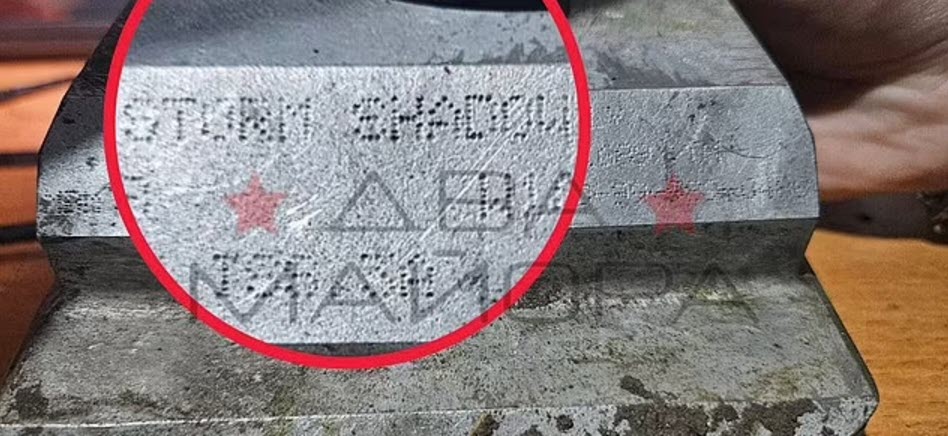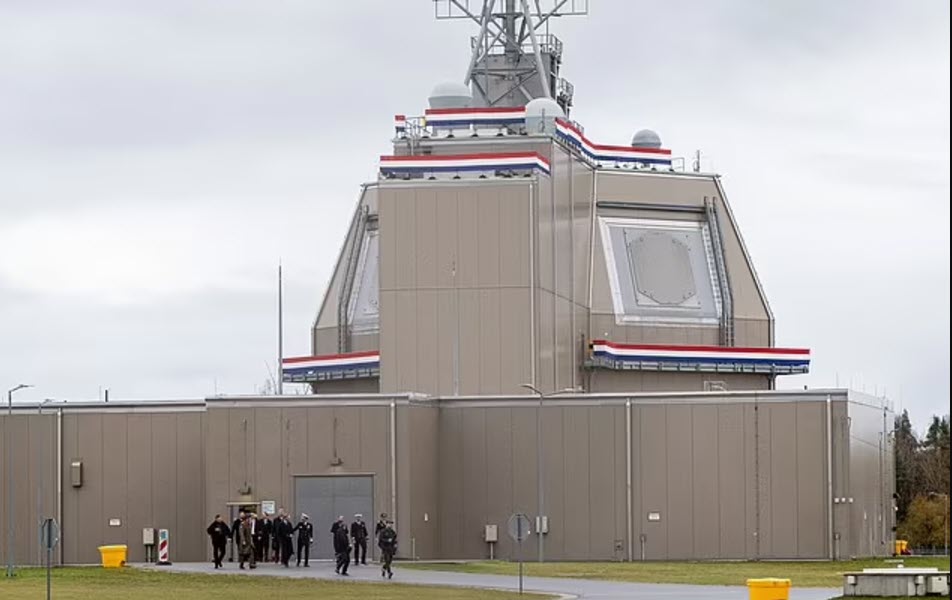Ukraine's air force reported that an ICBM had been fired from a base in Russia's southern Astrakhan region on the Caspian Sea early this morning. It struck Dnipro, Ukraine. This is the FIRST ICBM to be fired in war, in all of human history.
Russian authorities have not yet confirmed the launch, but it would be the first time such a powerful missile has been deployed in the war.
The Ukraine air force did not specify which ICBM had been fired, but its launch comes mere hours after a Russian military analyst said Moscow's forces could unleash its fearsome RS-26 'Frontier' missile in retaliation for the Storm Shadow strikes.
The Frontier missile is a terrifying, nuclear-capable weapon weighing roughly 50 tons with a range of up to 3,600 miles.
It has never before been used in combat, but analysts said it could be deployed with a conventional warhead in a strike that Ukraine's air defenses would be powerless to intercept.
The Ukrainian Air Force confirmed that Russia struck the Ukrainian city of Dnipro with a conventionally armed ICBM this morning, marking the first combat use of an ICBM in history.
— OSINTtechnical (@Osinttechnical) November 21, 2024
Footage from Dnipro showed glowing reentry vehicles hitting the ground around 5 AM local time. pic.twitter.com/PWTGajH9bT
Reported video of the ICBM attack seems to show a significant number of "re-entry vehicles" slamming into the ground in Dnipro. It is important to point out these were NOT nuclear warheads, merely conventional, but the hits were severe nonetheless:
Russia just struck a non-nuclear nation with an ICBM.
— Drew Pavlou 🇦🇺🇺🇸🇺🇦🇹🇼 (@DrewPavlou) November 21, 2024
The attack against Ukraine was non-nuclear but clearly designed to simulate a nuclear attack.
RUSSIA IS THE AGGRESSOR. PUTIN IS THE AGGRESSOR. CONDEMN PUTIN'S ESCALATION! pic.twitter.com/AdL7RgaoYM
Kyiv has not suffered an ICBM strike since the war began in February 2022, with Russia's military deploying smaller, slower Iskander missiles and a handful of hypersonic Kinzhal projectiles alongside hundreds upon hundreds of attack drones.
The Russian attack this morning also included other types of weapons which targeted enterprises and critical infrastructure in the central-eastern city of Dnipro, the air force said.
The Kremlin deployed Tu-95MS strategic bombers to launch cruise missiles and MiG-31K fighters to fire hypersonic Kinzhal rockets in a calculated bid to plunge Ukraine into darkness as a bitter winter approaches.
Reports said Yuzhmash, a prominent Ukrainian state-owned aerospace and defense manufacturer - was also hit in this morning's assault.
Some Russian missiles also reportedly struck the towns of Kremenchuk and Myrhorod, while areas in Kyiv, Odesa, and the Sumy regions suffered blackouts as the electrical grid gave out.
STORM SHADOW ATTACK AGAINST RUSSIA
This morning's bombardment of Ukraine also comes less than 24 hours after Kyiv launched UK-supplied Storm Shadow missiles at targets in Kursk.

Fragments of the missiles that struck a military facility in the Russian town of Marino were recovered by military bloggers on Wednesday afternoon, with unverified pictures (one shown above) shared widely on social media.
New U.S. Base in Poland Now a "Priority Target"
Russia this morning mentioned US air bases in Poland saying they can be targeted with 'advanced weapons.'
Moscow said the opening of a new US ballistic missile defense base in Redzikowo, Poland, near the Baltic coast will 'increase the overall level of nuclear danger', adding it had been added to a list of possible targets for Russia.
The facility, opened on November 13, forms part of a broader NATO missile shield called 'Aegis Ashore' designed to intercept short- and intermediate-range ballistic weapons.

'This is another frankly provocative step in a series of deeply destabilizing actions by the Americans and their allies,' Russian Foreign Ministry spokesperson Maria Zakharova said of the airbase's unveiling.
'(The base) has been added to the list of priority targets for potential destruction which, if necessary, can be executed with a wide range of advanced weapons,' she concluded.
Both Poland and Romania are hosting onshore versions of the Aegis ballistic missile defense systems The system is also used on many US naval vessels and carrier groups patrolling around Europe and serves primarily as a defense network against nuclear missiles.
The base certainly would have seen the ICBM that Russia launched against Ukraine overnight; and could do absolutely NOTHING about it.
That's the "rub" with so much of this "missile defense" spending; they can SEE the missiles but can't do anything about them. Yet these bases cost hundreds of millions of dollars, and we have bases all over the world. Billions spent on this . . . . and it can do nothing about missiles like the one(s) Russia fired at Ukraine overnight.
UPDATE 6:58 AM EST --
When an ICBM is used to target a relatively close target, it goes much higher up -- way into space --before coming back down on the target at screaming speed.
Even though the distance from its; launch point in Russia to Ukraine was only about 650 miles, it did not go "inter-continental" but the missile __can__ go inter-continental.
MORE:
Russia launched a single RS-26 "Rubezh" road mobile missile.
Analysis of imagery of the attack indicates the RS-26 carried six independent warheads, each in turn deploying several submunitions.
This warhead package is exclusively for conventional attack.
Russia had not been previously assessed to outfit the RS-26 with a warhead of this design.
By unveiling the conventionally armed RS-26, Russia is changing the qualitative nature of the conflict, something promised by President Vladimir Putin. Ukraine and its Western allies must now evaluate the destructive potential of this weapon, and understand that Russia can deliver this warhead to any target in Ukraine or Europe knowing there is no defense against it.
The RS-26 is produced in Votkinsk. It is assessed that the production of the RS-26, which was halted in 2017, was resumed this past summer.
With production rates estimated at 6-8 missiles per month, Russia could have accumulated an arsenal of between 30-40 RS-26 missiles.
Although described as an intercontinental ballistic missile, the RS-26’s range actually depends on the warhead package. If armed with a single warhead, it can exceed the 5,000 kilometer threshold used to differentiate between intermediate and intercontinental range missiles. The RS-26 did not go into serial production because of this ambiguity; at the time, Russia was a signatory to the INF treaty, which prohibited intermediate range missiles. It is assessed that the six warhead conventional warhead package used against Dnipro would have made the RS-26 used fall into the intermediate range for classification.
Donald Trump withdrew from the INF treaty in 2019. If the United States had remained in the treaty, this version of the RS-26 would not have been available for use by Russia.


